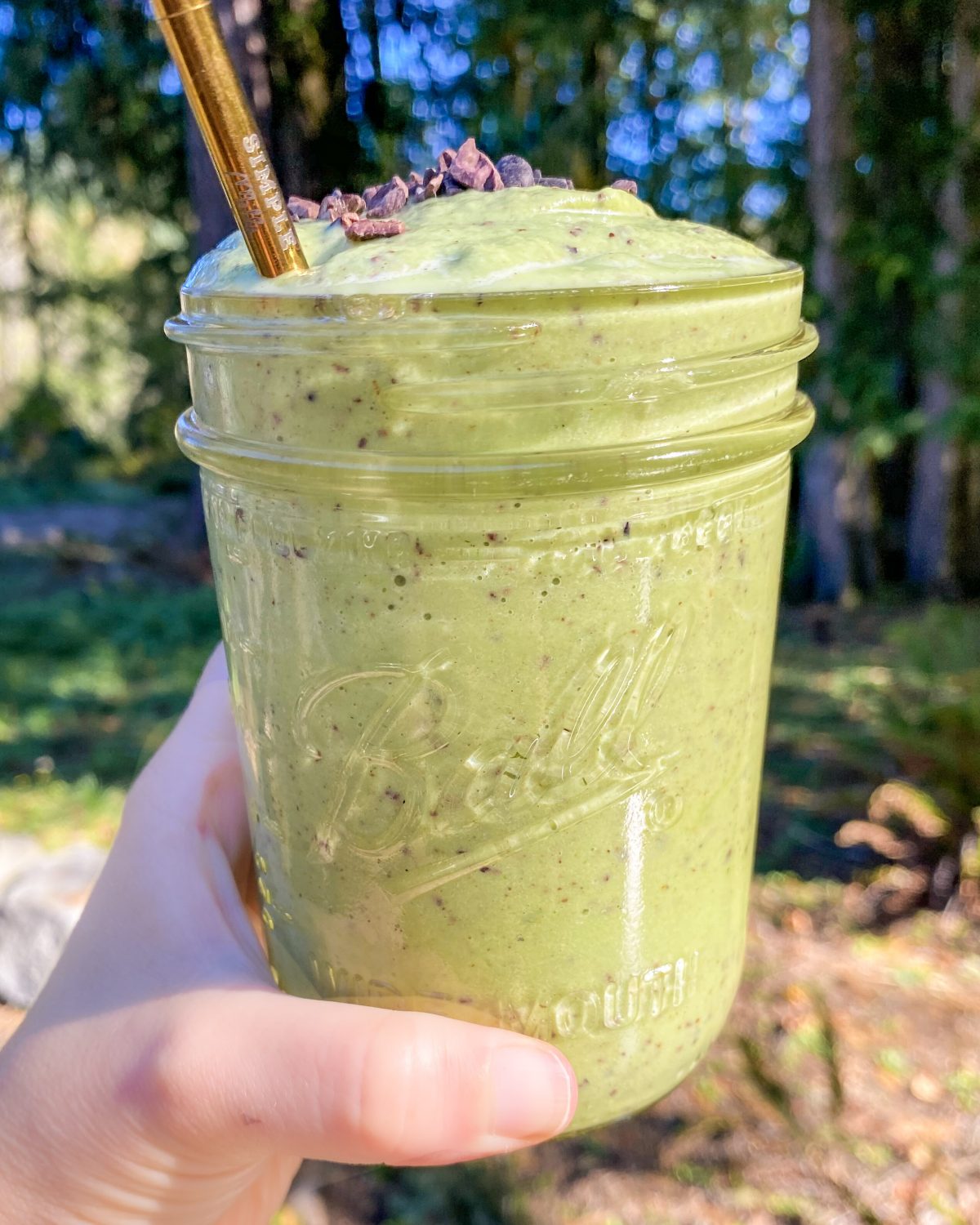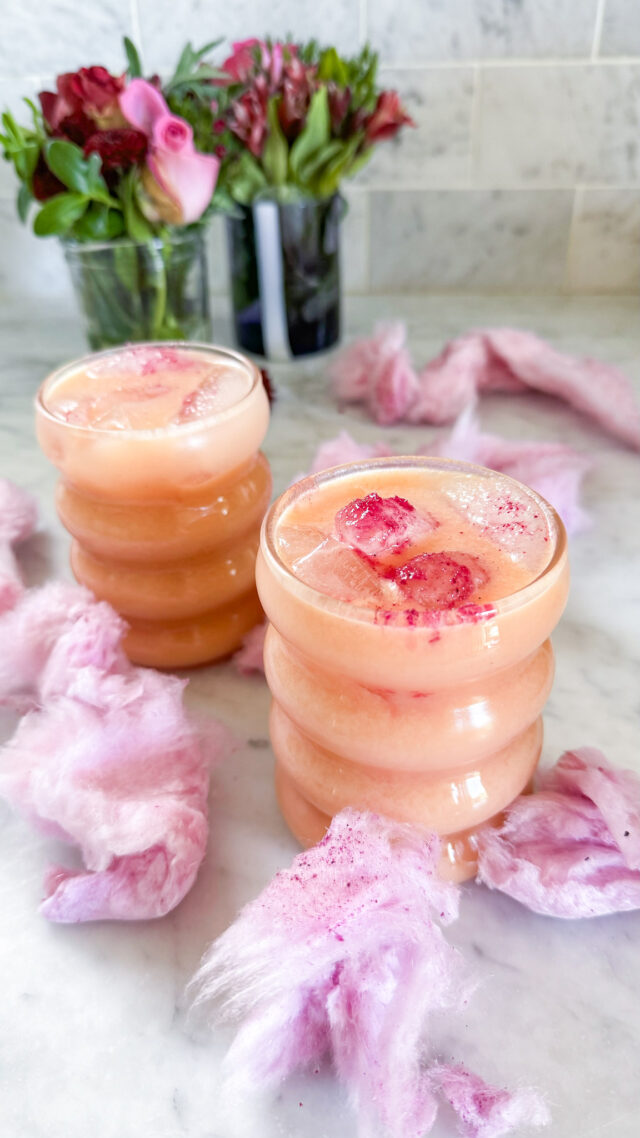Psst: this is a secret webpage that you get as a special thank you for joining the HTFam and subscribing to my email list. If you were forwarded it by a friend, first of all, I LOVE that you’re getting healthier together, and second, I’d so appreciate if you’d subscribe here.
Want a no-fail way to make a perfect green smoothie every single time? You’re in the right place! My Green Smoothie Guide is made up of my top tips for making healthy smoothies that taste super delicious (because that’s just as important!).
My whole philosophy is based around making the smallest changes to have the biggest impact in your health (I’m lazy, okay?)—and trading out your traditional breakfast for a green smoothie is at the top of my list. I’m a green smoothie devotee, consuming one almost every single morning, regardless of where in the world I am.

Why? By 9 am, you will have already consumed more vegetables than most people eat in a week, including several day’s worth of leafy greens, which are arguably the most nutrient dense foods in the world. They’re rich in vitamins, minerals, and fiber, and have benefits that range from clearer skin to better, more regular elimination. When I drink my morning green smoothie, I think of it as cleansing my insides, sweeping up all the gunk and injecting it with shiny new nutrients to start my day off right.
They also give you an incredible amount of energy–I’m not a coffee drinker, so my green smoothie is what helps me kick off the day right. I’m also a huge sweets person which is why I’m constantly re-making dessert to be healthy. As such, I love making my green smoothies taste absolutely delicious, like milkshakes. It helps me feel like I’ve had a treat, which I find deeply satisfying—but that treat is super healthy, so it’s a win win.
Plus, they take less than 5 minutes to make and require almost no cleanup (just pop some soap and water in your blender, run it again, and rinse!). What’s not to love about that?
While you don’t REALLY need recipes to make great green smoothies (although I’ve included a few in this book, just to get you started on the right track), to make sure you’re getting the most out of them, there are a few easy rules to follow:
1. Choose your greens.
Almost all leafy greens work here, although for heartier ones like kale or collards, you’ll want to remove the woody stem and steam them before blending. Spinach is often the best green to start with, as it has the mildest flavor, and the mixed green clamshells are also a mild, good choice. Once you get going, you can begin to note the flavors of the different greens, and plan smoothie flavors around them (arugula, for instance, is really spicy, which I love to use to make a spicy Mexican Hot Chocolate smoothie).
2. Rotate your greens.
Many, many people do not do this, and it’s so vital to getting the most health benefits out of your smoothies. All greens have a large amount of healthy ingredients and a very small amount of toxic ones, designed to encourage animals to graze judiciously on the green, moving on to another plant before the whole population, say, of kale was wiped out. To counter this, you need to switch up your greens regularly, especially because smoothies have you consuming such a large amount of them. There’s no need to be intense about this—simply make your way through a bunch of spinach, then grab arugula next time, mixed greens the next, then go back to spinach before grabbing some kale, and so on.
3. Choose your fruit.
I always go for frozen, as it cools down the whole smoothie and is much cheaper than fresh (and often more nutritious as well, since it was flash-frozen at peak freshness). I like to use some kind of berry, as they tend to be the lowest sugar and most fiber-packed berry. You can also use tropical fruit like pineapples and mango—just know that you’re adding a bit more sugar (which, again, is fine, as you’re consuming it with so much fiber and also good fat, which we’ll talk about in a second).
4. Add a banana.
Bananas are, to me, one of the keys to making a smoothie taste great (and not banana-y at all). The browner, the better—the little spots mean the starches have converted to sugars, which makes the banana much easier for your body to digest. I like to buy big bunches of banana and then peel them, chunk them, and freeze them in big Stasher bags. Frozen banana is the best way to make a smoothie have the taste and texture of a milkshake. If you really hate banana, you can add an avocado and a bit more fruit. Frozen cauliflower also adds a beautifully creamy quality to smoothies (really), and roasted sweet potato makes them creamy AND a bit sweeter.
5. Add some good fat.
This is important, and many people skip this step. Almost all vegetables are filled with fat-soluble vitamins, which means that you need, as the name suggests, fat to absorb them in your body. Fat will also make your smoothie creamier, and it will help keep you full till lunch time. There are tons of great, healthy fats, but I typically reach for: a few spoonfuls of chia seeds, soaked in water for about 10 minutes while I prep the other ingredients; ½ – 1 avocado; a few spoonfuls of flax seeds; a few spoonfuls of hulled hemp hearts; a heaping spoonful of coconut butter; a heaping spoonful of nut butter; or a handful of pumpkin or sunflower seeds.
6. Add some protein.
Protein is the other component that helps keep you full, and prevents your blood sugar from spiking and crashing, leaving you feeling hangry and less than stoked. If you find yourself ravenous after consuming smoothies, it’s likely because they don’t have enough fat and protein. I like to use protein powders, grass-fed collagen, hulled hemp hearts, pumpkin seeds, and Greek yogurt as the protein in my smoothies.
7. Add a pinch of sea or mineral salt.
This will bring out the yummy flavors and help you better absorb the rest of the nutrients. I love Real Salt for its flavor and mineral density.
8. Utilize your spice cabinet.
Spices are the original superfoods. While it’s fun to add things like maca, camu camu and more, spices are often already in your pantry and have the ability to really transform the flavor and health benefits of smoothies. I sprinkle a bit of ground turmeric and black pepper in nearly all of my smoothies for the anti-inflammatory benefits (you can’t taste it at all). Cinnamon adds a dash of sweet, delicious flavor to berry bases, and cardamom and cherry is an irresistible combo. Cayenne with mango is the perfect summer combo (especially if you add a good squeeze of lemon too!). Play around. As long as you stick with spices that generally sound like they’d go well in a pie or juice (ie no cumin or garlic), you should be good to go.
9. Pick your liquid.
I’m gonna be honest here—I mostly use water, because I always have it on hand. If you do everything above, you don’t really need the fancy nut milks or coconut waters (although those can be super fun too). If I really want a decadent smoothie, I’ll use canned coconut milk for a thick, milkshake-like texture, but water is what I reach for 99% of the time. If you had hulled hemp hearts while you’re adding water, you’re essentially making hemp milk when you blend!
10. Make ‘em in batches.
Smoothies keep the vast majority of their nutrients for 2 full days in the fridge, and can also be frozen and defrosted in the fridge overnight. There’s nothing like having a full, nutritious breakfast prepped and waiting for you the fridge so take advantage of this and make your smoothies in batches! I store mine in Mason jars with the lid tightly screwed on.
Did you make one of my smoothie recipes? Tag me on Instagram (@lizmoody)—I can’t wait to see!






